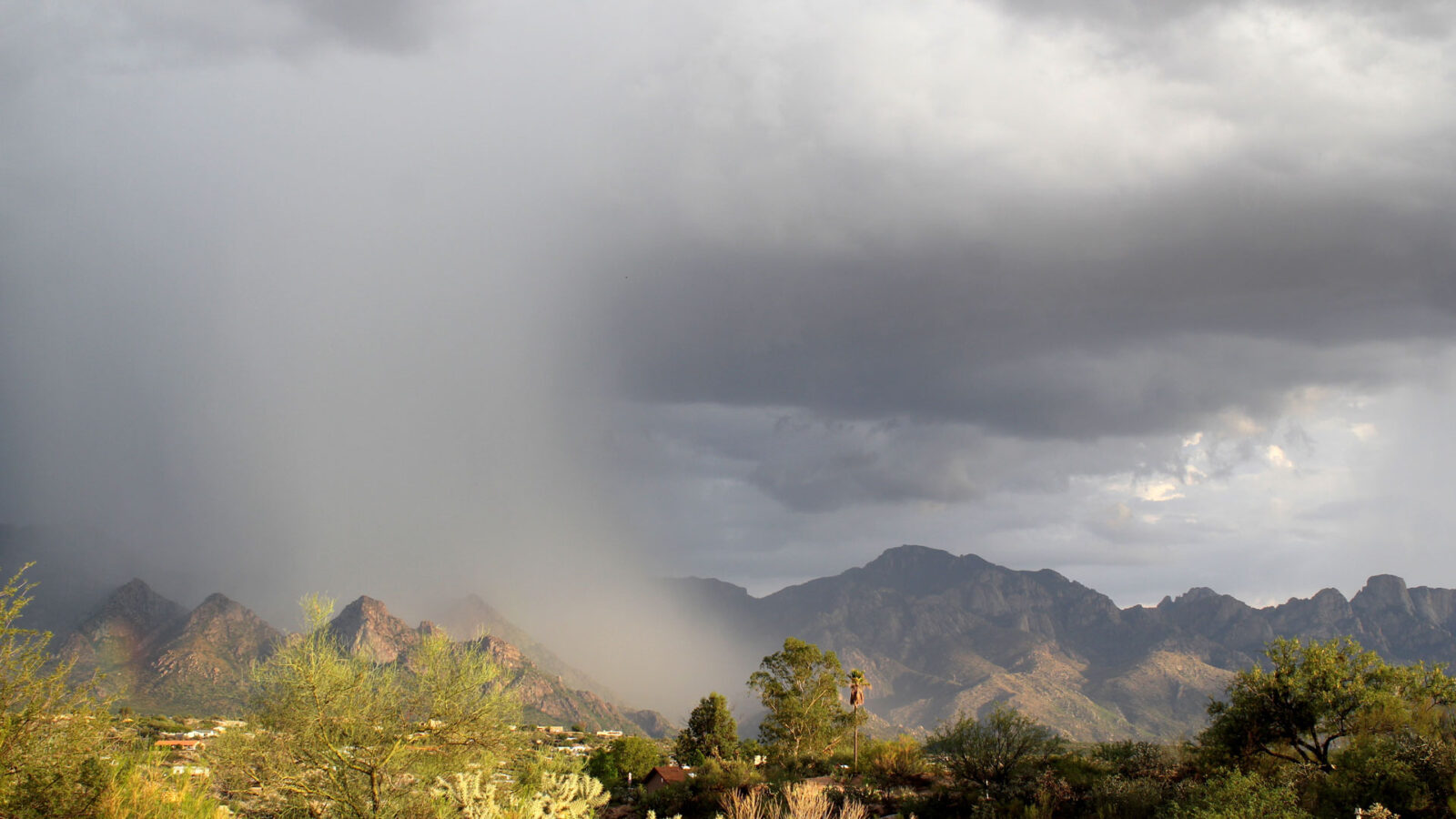Southern Arizona is known for its blazing sun, saguaros, and—seasonally—its powerful, short-lived monsoon rains. For Tucson homeowners, these intense downpours can seem both magical and fleeting. But with the right approach, you can turn that temporary deluge into a long-term asset by harvesting rainwater.
Rainwater harvesting isn’t just an eco-conscious practice—it’s practical, economical, and increasingly supported by local policy and incentives. In a region where drought is persistent and water conservation is essential, capturing the monsoon is a smart step toward sustainable desert living.
Why Harvest Rainwater in Southern Arizona?
Tucson averages about 12 inches of rain per year, most of it concentrated during the monsoon season (typically late June through early September). Though infrequent, these rains often come in dramatic bursts—thunderstorms that dump inches of water in minutes.
Here’s why that water matters:
-
Water conservation: Harvesting rain reduces the need for municipal water, especially for irrigation.
-
Stormwater management: Redirecting rainwater reduces erosion and runoff damage.
-
Soil health: Rainwater improves soil structure and supports native plant growth.
-
Cost savings: Less water from the tap means lower monthly bills.
Plus, in a desert environment, rainwater is pure and free from chlorine, salts, and other additives—ideal for your plants.
Passive vs. Active Harvesting
There are two primary approaches to rainwater capture: passive and active.
Passive Rainwater Harvesting
Passive systems use the natural flow of water to soak into your landscape. No storage tanks or mechanical parts—just gravity and smart design.
Common passive features:
-
Swales and berms: Shallow ditches or mounds that direct water to plants.
-
Contoured planting beds: Shape your garden so water naturally flows to it.
-
Permeable paving: Allows water to soak into the ground instead of running off.
Tucson residents often install sunken garden basins around native trees or cacti, letting the roots soak up monsoon water long after the rain has stopped.
Active Rainwater Harvesting
Active systems store water for later use. These systems require more infrastructure, but they’re ideal for year-round irrigation or even indoor use (with proper filtration).
Common active systems:
-
Rain barrels (50–100 gallons)
-
Above-ground cisterns (200–5,000 gallons)
-
Underground tanks (customized for large storage)
Water is collected from roofs via gutters and downspouts, filtered to remove debris, and stored for later use.
Local Experts Lead the Way: Brad Lancaster’s Tucson Legacy
Tucson is considered one of the most forward-thinking rainwater harvesting cities in the country—largely thanks to experts like Brad Lancaster, a local permaculture designer and author of the book Rainwater Harvesting for Drylands and Beyond.
Brad turned his neighborhood in Dunbar/Spring into a lush, edible, shade-filled landscape—just using rainwater. His designs, many of which involve curb cuts and passive catchment, have become models across the country.
“The desert is not the problem. The problem is the way we interact with it.” – Brad Lancaster
You can visit Brad’s property, attend his workshops, or explore online resources at HarvestingRainwater.com.
Tucson’s Rainwater Harvesting Rebates
The City of Tucson offers generous rebates for rainwater harvesting systems, helping homeowners offset the upfront costs of installation.
Program highlights:
-
Up to $2,000 rebate for active systems
-
Up to $500 rebate for passive systems
-
Free workshops are required before applying
-
DIY or professional installation options
Learn more at the Tucson Water Rainwater Harvesting Rebate Program: tucsonaz.gov
Designing Your System: What Tucson Homeowners Need to Know
1. Know Your Roof
-
Calculate the square footage to estimate potential water yield.
-
Example: 1,000 sq. ft. of roof yields ~600 gallons from just 1 inch of rain.
2. Plan Your Drainage
-
Always divert overflow away from your home’s foundation.
-
Use swales, gravel trenches, or dry wells to safely distribute extra water.
3. Start with Native Plants
-
Native and drought-tolerant species (like brittlebush, desert spoon, mesquite, or chuparosa) thrive with rainwater alone.
4. Tank Placement & Sizing
-
Choose tanks that match your usage goals and property size.
-
Ensure your tank is shaded and stabilized on a proper foundation.
Integrating With Your Landscape Design
Rainwater harvesting isn’t just practical—it’s beautiful when integrated into your landscape.
Consider:
-
A cistern disguised as a garden sculpture
-
Swales that create organic, flowing garden shapes
-
Rock-lined catchment basins around trees
These features enhance your yard’s aesthetic, promote biodiversity, and keep your landscape green even in the heat of summer.
Maintenance Matters: Tips for Every Season
To keep your rainwater harvesting system efficient:
-
Clean gutters and screens at the start of monsoon season
-
Inspect tanks and pumps monthly
-
Clear overflow paths before major storms
-
Check for mosquito larvae and use mosquito-proof screens
Even passive systems need occasional attention—keep basins free of debris, and mulch appropriately.
Why It’s More Than Just Conservation
Harvesting rainwater is about:
-
Resilience in the face of drought and rising water prices
-
Independence from unpredictable municipal supplies
-
Respect for the desert ecosystem and native flora
Plus, it’s empowering to know your landscape can thrive on what nature provides, even in a place as dry as Tucson.
Ready to Capture the Rain? Fairfield Homes Can Help
At Fairfield Homes, we design semi-custom and custom homes with the Sonoran Desert in mind—from lot orientation to sustainable landscaping. Many of our clients incorporate rainwater harvesting into their home designs from the start.
Want help building a home that embraces the desert rather than fights it? Speak to a Fairfield Homes expert today to explore homes that match your lifestyle and Tucson’s unique beauty.

